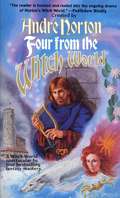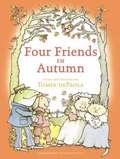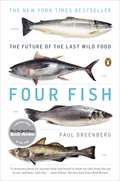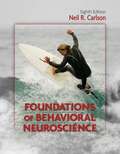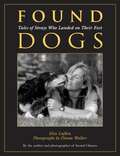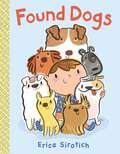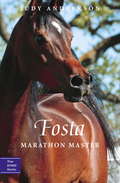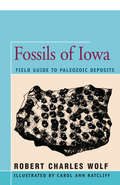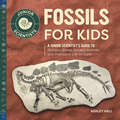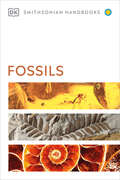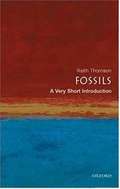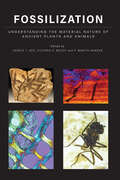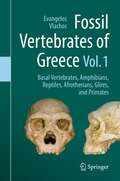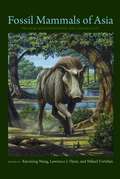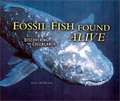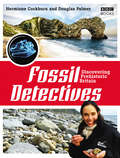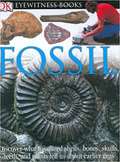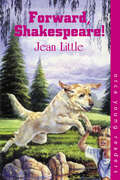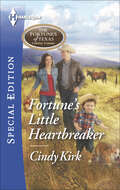- Table View
- List View
Four Friends in Autumn
by Tomie DepaolaIt's a beautiful fall day -- perfect for dinner with friends. But will it ever be time to eat? It's autumn! The air is cool and crisp, and the leaves have changed to bright golds and reds. Mistress Pig wants to celebrate her favorite season by cooking a big feast for her friends. Mister Frog, Missy Cat, and Master Dog can't wait to taste all the delicious food. But why is it taking so long for Mistress Pig to come out of the kitchen? You'll never believe what happened to dinner! Join Tomie dePaola's beloved characters as they realize that every meal tastes better when served with a healthy dollop of friendship.
The Four Friends
by BookboxFour animal friends stick together and help each other from getting caught.
Four Forest Friends and Other Panchatantra Tales
by Suvir KaulThe stories are: Dhenchu Sings Out Loud, Two Crows and a Snake, Crocodile Tears, and Four Forest Friends.
Four Fish: The Future of the Last Wild Food
by Paul GreenbergOur relationship with the ocean is undergoing a profound transformation. Whereas just three decades ago nearly everything we ate from the sea was wild, rampant overfishing combined with an unprecedented bio-tech revolution has brought us to a point where wild and farmed fish occupy equal parts of a complex and confusing marketplace. We stand at the edge of a cataclysm; there is a distinct possibility that our children's children will never eat a wild fish that has swum freely in the sea. In Four Fish, award-winning writer and lifelong fisherman Paul Greenberg takes us on a culinary journey, exploring the history of the fish that dominate our menus---salmon, sea bass, cod and tuna-and examining where each stands at this critical moment in time. He visits Norwegian mega farms that use genetic techniques once pioneered on sheep to grow millions of pounds of salmon a year. He travels to the ancestral river of the Yupik Eskimos to see the only Fair Trade certified fishing company in the world. He investigates the way PCBs and mercury find their way into seafood; discovers how Mediterranean sea bass went global; Challenges the author of Cod to taste the difference between a farmed and a wild cod; and almost sinks to the bottom of the South Pacific while searching for an alternative to endangered bluefin tuna. Fish, Greenberg reveals, are the last truly wild food - for now. By examining the forces that get fish to our dinner tables, he shows how we can start to heal the oceans and fight for a world where healthy and sustainable seafood is the rule rather than the exception.
Foundations of Behavioral Neuroscience (Eighth Edition)
by Neil R. Carlson'Foundations of Behavioral Neuroscience' offers a briefer, sixteen chapter introduction to the foundations of physiology, incorporating the latest studies and research in the rapidly changing fields of neuroscience and physiological psychology.
Found Dogs: Tales of Strays Who Landed On Their Feet (Lyons Press Ser.)
by Elise LufkinEvery year, millions of dogs are abandoned—at animal shelters, racetracks, or on the side of the road. Many of these animals end their days without ever knowing a caring human hand, but some are fortunate enough to be found and given a second chance. And these dogs, often rescued from death’s door, seem to have even more than the usual canine capacity for love and loyalty. Found Dogs is full of wonderful photos and words by people who have adopted dogs in myriad ways. Celebrities from Peter Mayle, Jamie Lee Curtis, Al Gore, and Bobby Short to everyday heroes who have found dogs--from purebreds to scruffy mix-breeds--that have become service dogs, protectors, and friends, offering solace, aid, companionship, and inspiration. Found Dogs is a moving tribute to the power of love between people and dogs--how that love has transformed dogs who were lost, and the people who were lucky enough to find them.
Found Dogs
by Erica SirotichFor fans of Sandra Boynton&’s Doggies and Karent Katz's Counting Kisses, this adorable rhyming and counting book tallies up all the dogs at the shelter, and then counts backward as the pups are adopted—a perfect fit for every preschooler&’s library. Babies and toddlers will delight in counting up each wriggly, wraggly rescue pup and then counting back down as each doggie is adopted. A bright, bouncy rhyme, jubilant art, and scads of adorable dogs will have wee ones giggling for more. These patient pound dogs. Now they&’re family! Found dogs.
Foul-Mouthed Pets
by Mark Leigh Mike LepineOh dear. It seems that our furry friends have picked up some very bad language. From gutter-mouthed guppies to Fidos that say ‘f***!’, Foul-Mouthed Pets combines comical and cute photos with inappropriate captions to tickle the belly of animal lovers everywhere.
Fosta: Marathon Master (True Horse Stories)
by Judy Andrekson David ParkinsIf nature had taken its course, Fosta would never have lived. But thanks to quick and loving intervention, the plucky little foal did survive. In the first few moments of his life, he was stolen from his dame by an expectant mare. When she had no milk to give him, he had to be fostered by a third "mother" since his own refused to take him back. From the very beginning, his chances of amounting to anything were horribly slim. Added to that, it didn't look as if he would ever be big enough for racing. Yet Fosta has become one of the best-known horses ever to run Australia's grueling "ultimate endurance test," the Shahzada. For five days, the toughest and fastest horses compete internationally to cover four hundred kilometers of rugged terrain. The motto of the event is "To Finish is to Win," and Fosta has finished an incredible ten out of eleven starts, making him one of the most consistent and enduring horses of all time. Here is his story, told so that readers will feel they are atop Fosta as he attempts to earn his last completion buckle.From the Trade Paperback edition.
Fossils Tell of Long Ago (Let's-Read-and-Find-Out Science 2)
by AlikiWhat is a fossil?Sometimes it's the imprint of an ancient leaf in a rock. Sometimes it's a woolly mammoth, frozen for thousands of years in the icy ground. Sometimes it's the skeleton of a stegosaurus that has turned to stone.A fossil is anything that has been preserved, one way or another, that tells about life on Earth. But you can make a fossil, too—something to be discovered a million years from now—and this book will tell you how.
Fossils of Iowa: Field Guide to Paleozoic Deposits
by Robert Wolf Carol Ann RatliffThe Fossils of Iowa field guide is written primarily for amateurs in geological exploration and collecting. Robert Wolf provides a comprehensive coverage of more than 150 sites in Iowa and adjacent areas of Minnesota and Nebraska with the types of fossils that can be found and precise directions. Excellent illustrations by Carol Ann Ratcliff aide in identification. For an update in site conditions and geological names since the book was first published contact the author at midnightwriter@frontiernet.net.
Fossils for Kids: A Junior Scientist's Guide to Dinosaur Bones, Ancient Animals, and Prehistoric Life on Earth (Junior Scientists)
by Ashley HallUncover the ancient past—a guide to fantastic fossils for kids ages 6 to 8 Set off on an amazing adventure into the prehistoric past when dinosaurs roamed the Earth. Fossils for Kids is filled with fascinating photographs and captivating facts that will teach junior fossil hunters how fossils form, where they are found, and tips on how to identify them. Start by learning more about some of your favorite dinosaurs—from Velociraptor to Tyrannosaurus rex—and where you can see the coolest dinosaur skeletons. Then discover the creatures that predate even the dinosaurs! You'll meet famous birds, like the Archaeopteryx, explore tiny invertebrate trilobites, and learn which ancient plant is the source of a delicious drink—root beer! Fossils for Kids includes: Beyond dinos—You won't just be learning about dinosaurs; this book covers mammals, other reptiles, and plant fossils. Greater knowledge—Use the fun sidebars to dive deeper into the fossil world and get more hands-on learning. Clear images—The colorful pictures allow you to easily identify fossils. It's time to unearth your scientific curiosity—there's no telling what you'll find using Fossils for Kids as your guide.
Fossils (DK Handbooks)
by DKThe clearest and sharpest recognition guide to over 500 invertebrate, vertebrate, and plant fossils from around the world. This comprehensive pocket guide is the perfect introduction to finding, identifying, and collecting fossils. It features more than 500 species of plant and animal fossils, from trilobites and megafauna to dinosaurs and ancient trees. This handbook cuts through the complicated identification process with expertly written and thoroughly vetted text that features precise description, enabling you to recognize a species instantly. Over 1,000 photographs, with illuminating annotations, help you pick out a fossil's chief characteristics and distinguishing features, while a color illustration shows the fossil as a living plant or animal. The detailed introduction explains what a fossil is and how they are classified. Start building your own collection with advice on where to look for fossils, what tools and safety equipment are needed for collecting, and how best to organize a fossil collection. To help you in the initial stages of identification, this book provides a visual identification key that makes it easy to recognize a fossil and place it in its correct group. Finally, a concise glossary gives instant understanding of technical and scientific terms.
Fossils: The Key to the Past
by Richard A. ForteyA guide for amateur fossil collectors and general readers to how fossils came about, how to find and identify them, and their economic and practical importance. Emphasizes fossils easy to find. Includes a short glossary without pronunciation.
Fossils: A Very Short Introduction
by Keith ThomsonFossils have not always been easily understood - there have been doubts about what they are and what they mean, and at times their very existence has threatened the prevailing views of the origins of life and the age of the Earth. Building on the latest scientific understanding, Keith Thomson places fossils in a very human context, highlighting their impact on mythology, philosophy, our concept of time, and popular culture. This Very Short Introduction provides a remarkably all encompassing explanation of fossils as a phenomenon.
Fossilization: Understanding the Material Nature of Ancient Plants and Animals
by Carole T. Gee, Victoria E. McCoy, and P. Martin SanderAn in-depth look at the latest breakthroughs in our understanding of the material record that deep time leaves behind.Understanding the complex interplay of physical and chemical processes leading to fossilization is crucial to elucidating the 3800 million years of life on earth. And yet, the process of fossilization also leads to the loss of pivotal biological information, placing constraints on the very same understanding of ancient life it preserves. Over the last decade, however, remarkable advances in approaches, techniques, tools, and instrumentation have helped scientists to transcend these constraints by enabling high-resolution analysis of fossil material—even down to the nanoscale. Fossilization provides a critical look at these cutting-edge innovations in the science of fossil preservation and provides a road map for future research. Drawing from the fields of paleontology, organic and inorganic chemistry, microbiology, and high-resolution imaging and analysis, and spanning the diversity of life from plants to vertebrates and invertebrates, this resource details expert findings on• fossilization of hard and soft part tissues in dinosaurs• high-resolution chemical analysis of organic and inorganic tissues• arthropods preserved in amber• experimental silicification of wood• chemical defenses and color in fossil plants • confocal Raman spectroscopy• microprobe analysis• radioisotopic studies• and much moreA true interdisciplinary undertaking, the book is authored by paleontologists, mineralogists, geochemists, organic chemists, microbiologists, and materials scientists who have worked together to investigate questions around substance fossilization and the limits of the fossil record. A special color section contains SEM, Raman, and other striking images of vertebrates, invertebrates, and plants. Fossilization is a trailblazing reference book for research scientists and specialists in related fields, as well as for advanced undergraduates and graduate students interested in fossilization, emerging research techniques, and fresh approaches in the analysis of plant and animal fossils.Contributors: H. Jonas Barthel, Aurore Canoville, Carole T. Gee, Thorsten Geisler, Jens Götze, Conrad C. Labandeira, Sashima Läbe, Moritz Liesegang, Victoria E. McCoy, Martina Menneken, Jes Rust, P. Martin Sander, Frank Tomaschek, Torsten Wappler, Kayleigh Wiersma, Tzu-Ruei Yang
Fossil Vertebrates of Greece Vol. 1: Basal vertebrates, Amphibians, Reptiles, Afrotherians, Glires, and Primates
by Evangelos VlachosThis 2-volume set provides a state-of-the-art study of the fossil record and taxonomy of the main vertebrate groups from Greece. Greece stands between 3 continents and its vertebrate fossil record is of great importance for paleontological and evolutionary studies in Europe, Asia and Africa. Fossils from classic, world-famous localities (e.g., Pikermi, Samos) form an essential part of the collections of the most important museums in the world and have been studied by numerous scientists. Recent paleontological research led to the discovery and study of numerous new sites. The volumes contain a taxonomic review of all named and identified taxa, their taxonomic history and current status, as well as historical, phylogenetic and biogeographic information. Volume 1 contains a synopsis of the fossil record and taxonomy of important groups of vertebrates represented in the fossil record of Greece. The volume deals with some of the early splitting clades, including the basal and enigmatic conodonts and basal tetrapods like fishes, amphibians, and reptiles like lizards, snakes, crocodiles, turtles and tortoises. The second part of the volume deals with basal mammalian clades, some of which are quite characteristic for the fossil record of the country: aardwarks, hyraxes, proboscideans, elephants and mammoths, sea cows, rodents, and lagomorphs. The volume ends with special chapters on the primate fossil record of the country, including some of our most recent and distant relatives.
Fossil Primates
by Susan CachelReconstructing the paleobiology of fossil non-human primates, this book is intended as an exposition of non-human primate evolution that includes information about evolutionary theory and processes, paleobiology, paleoenvironment, how fossils are formed, how fossils illustrate evolutionary processes, the reconstruction of life from fossils, the formation of the primate fossil record, functional anatomy, and the genetic bases of anatomy. Throughout, the emphasis of the book is on the biology of fossil primates, not their taxonomic classification or systematics, or formal species descriptions. The author draws detailed pictures of the paleoenvironment of fossil primates, including contemporary animals and plants, and ancient primate communities, emphasizing our ability to reconstruct lifeways from fragmentary bones and teeth, using functional anatomy, stable isotopes from enamel and collagen, and high resolution CT-scans of the cranium. Fossil Primates will be essential reading for advanced undergraduates and graduate students in evolutionary anthropology, primatology and vertebrate paleobiology.
Fossil Mammals of Asia: Neogene Biostratigraphy and Chronology
by Lawrence J. Flynn Mikael Fortelius Xiaoming WangFossil Mammals of Asia, edited by and with contributions from world-renowned scholars, is the first major work devoted to the late Cenozoic (Neogene) mammalian biostratigraphy and geochronology of Asia. This volume employs cutting-edge biostratigraphic and geochemical dating methods to map the emergence of mammals across the continent. Written by specialists working in a variety of Asian regions, it uses data from many basins with spectacular fossil records to establish a groundbreaking geochronological framework for the evolution of land mammals. Asia s violent tectonic history has resulted in some of the world s most varied topography, and its high mountain ranges and intense monsoon climates have spawned widely diverse environments over time. These geologic conditions profoundly influenced the evolution of Asian mammals and their migration into Europe, Africa, and North America. Focusing on amazing new fossil finds that have redefined Asia s role in mammalian evolution, this volume synthe sizes information from a range of field studies on Asian mammals and biostratigraphy, helping to trace the histories and movements of extinct and extant mammals from various major groups and all northern continents, and providing geologists with a richer understanding of a variety of Asian terrains.
Fossil Fish Found Alive: Discovering the Coelacanth
by Sally M. WalkerDescribes the 1938 discovery of the coelacanth, a fish previously believed to be extinct, and subsequent research about it.
The Fossil Detectives: Discovering Prehistoric Britain
by Douglas Palmer Hermione CockburnFossils provide us with a tantalizing glimpse of Britain's prehistoric past and hold the key to unlocking the secrets of life's history and evolution. Since the appearance of primitive organisms in Britain more than a billion years ago, oceans, deserts, swamps and vast mountains have come and gone in our corner of western Europe; forests of long-extinct trees, flowers and grasses have covered the land, and dinosaurs and other strange creatures have roamed across it. How do we know? The evidence is all around us - in the rocks and fossils that lie beneath the landscape.In this highly informative and practical book, which accompanies the BBC series, presenter Hermione Cockburn and renowned palaeontologist Douglas Palmer take an in-depth look at the most exciting fossil stories from around the country. When and why were dinosaur fossils first discovered in Britain? How was the biggest fish ever to have swum in the sea unearthed near Peterborough? What do modern medical techniques have to offer fossil hunters?Packed with colour photographs and illustrations, Fossils Detectives is full of surprising facts and features. And for those who want to try their hand at some fossil detecting of their own, the book includes an extensive regional gazetteer of fossil-hunting sites and places to visit, and guidance on identifying your fossil finds.Get ready for some time travel around Britain, with the Fossil Detectives!
Fossil (DK Eyewitness Books)
by Paul D. TaylorA photo essay about different types of fossils, including bacteria, algae, birds, mammals and more.
Forward, Shakespeare! (Orca Young Readers)
by Jean LittleSeeing-eye pup, Shakespeare, conquered many fears in Rescue Pup. Now he is back, about to be matched up with a blind boy, ready to begin his working life. Tim is enraged by his blindness and wants nothing to do with a guide dog. But he is no match for Shakespeare.
Fortune's Little Heartbreaker (The Fortunes of Texas: Cowboy Country #2)
by Cindy KirkROMANCING THE...NANNY? Sir Oliver Fortune Hayes is new to Horseback Hollow...new to Texas...and even new to parenting. It's enough to drive a man daft-and daft he would go, if it weren't for Ollie's new nanny, Shannon Singleton. A cowgirl for a nanny? It's a little unorthodox, but it works. The trouble is, now Oliver can't help imagining sweet Shannon as his Valentine. She's warm and bubbly and...much too young for the likes of him. Will proper Oliver maintain his upper-crust composure? Or will the love of a good Texas woman rope him in for good?
